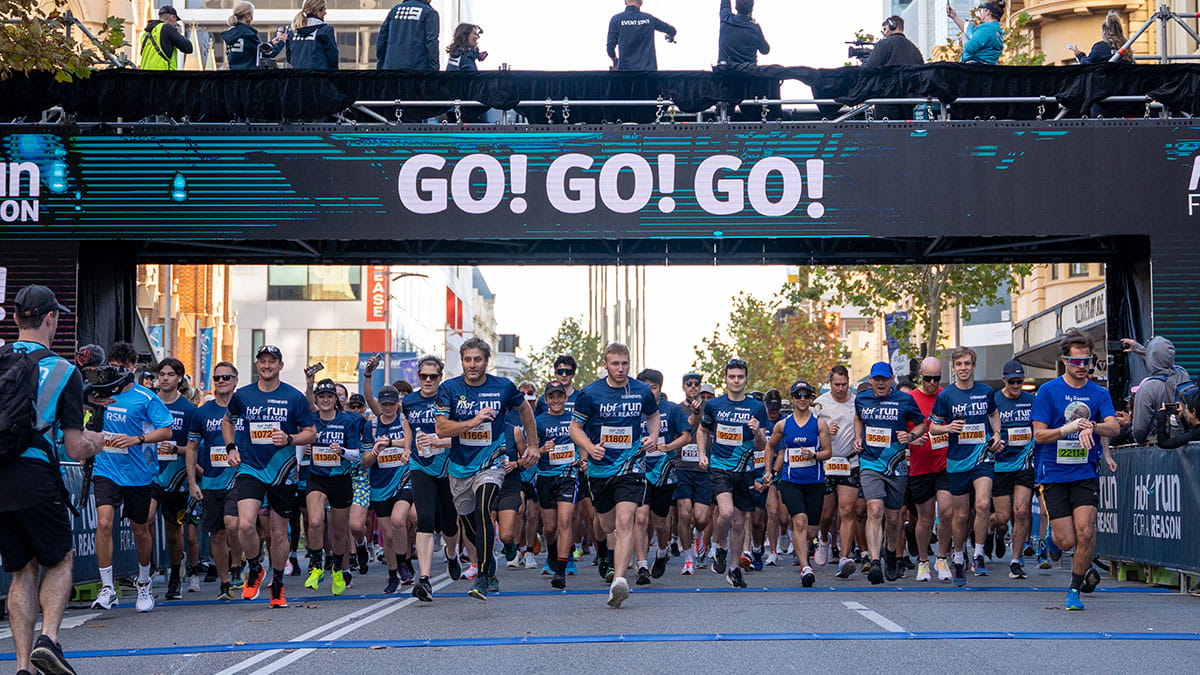Blog article
Pushing through pain while you train – the green and red lights to look out for

We get it, many runners find it hard to rest when they could be running but also, nobody wants an injury on their hands (or knee, or ankle!)
That’s why it’s important to educate yourself on what’s acceptable pain to push through, and what may require some support from a trained physiotherapist.
Meet Luke from HBF Physio. A postgraduate musculoskeletal physiotherapist – Luke is heavily focused on the management of complex, persistent pain and is passionate about assisting his patients in realising they can live life without pain. He’s also a big fan of HBF Run for a Reason and making sure his patients know all about pain management – and the green and red lights of pain that can pop up while training for a race.
Luke has kindly put the below list together, to help you understand when you can proceed with your training by modifying your training plan or by managing your symptoms with a Physio.
Let’s start with the green lights
Muscle tightness and soreness
- Both soreness and tightness are common, and often delayed after increased physical activity
- You will find muscle soreness peaks 48-72hrs after physical activity
- Luckily, it improves with recovery – think low-intensity movement, light stretching and some remedial massage.
Book here: Time for a remedial massage? HBF Physio can help with that
Tendinopathy
- This is defined by stiffness and pain often after periods of inactivity
- Tendinopathy is often worse first thing in the morning
- This can flare up if there has been a change in activity levels but can be a green light situation where continuing running will not worsen the outcome of the injury, and in some instances help it to resolve.
Patellofemoral pain
- This is defined by pain at the front of the knee from loaded knee flexion – usually if your activity has involved hills/ slopes /stairs/ squatting or lunging
- You might also experience muscle tightness at the front of the thigh
- Patellofemoral pain can be a result of reduced strength and control around the hip joint as well – but again can be managed with the help of a trained Physio and your training does not necessarily need to pause.
7 ways to reduce exercise-related injuries
Moving onto the red lights, also known as - it’s time to book a physio appointment
The below list is a guide to help you know when you should pause your training until further advice from a trained physio or Doctor and seek a management plan to help you get back on track.
Bone stress injury
- Look out for a dull ache that gets more intense during load-bearing activity
- Have you had a significant increase in your running volume (kilometres per week)
- Do you get any aching throbbing at rest or when trying to sleep?
Musculotendon strain/tear
- This is an acute muscle injury that comes from a specific event - often felt as a tear or a pop
- The associated acute injury symptoms include swelling, pain, reduced strength, and flexibility
Acute ligament injury
- an acute ligament injury with a specific event as the cause, a giving way or instability sensation of the joint
- associated acute injury symptoms include swelling, pain, reduced strength, and flexibility
While pain is complex and never something to be totally ignored - pushing through certain symptoms can help your physical performance. That’s why knowing your red and green lights is key to training smart and getting to the HBF Run for a Reason finish line injury-free!
Did you know?
A trained Physio can help you put together a training plan if you’re working toward a running event like HBF Run for a Reason. HBF Physio by Life Ready has clinics across Perth ready to help you get run-ready. Ready to meet your new Physio? Click here.


